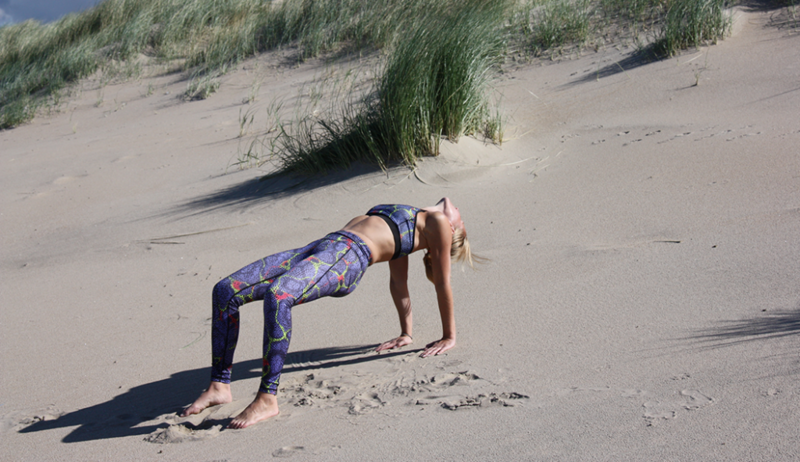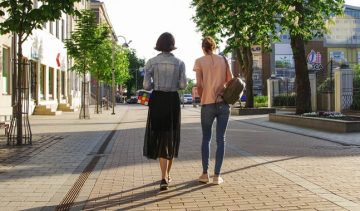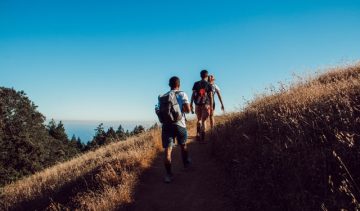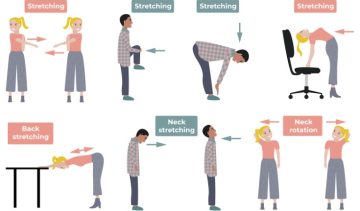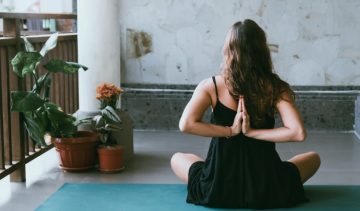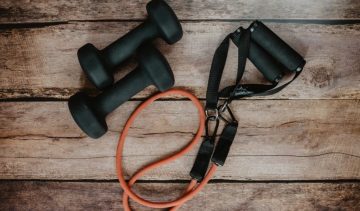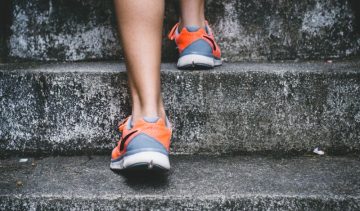The summer is in full swing and who doesn’t want well-shaped buttocks in his or her beach outfit? The most effective way to do that is to practice yoga regularly. Yoga has been scientifically proven to be the most effective sport to train the body! It makes muscles stronger, more flexible and improves overall body posture. In this blog more about the yoga posture the Tabletop (also called Table) that provides well-shaped buttocks. Regularly doing this asana has a positive effect on the muscles of the buttocks.
What is the Table pose?
This is a starting pose; backward bend with arm support. In yoga jargon this pose is called “Chatus pada pitham”. Chartus stands for four, Pada for foot and Pitham for bench, seat or chair. The focus in this asana are the legs, arms and torso. To bring the body up, the buttocks, thigh muscles and hamstrings are active.
What is the effect of the Table?
By raising the body and keeping the shoulders and knees at the same height, the muscles in the legs, arms and corse are immediately activated. The triceps ensure that the arms can support the body weight. Just like the buttocks, thigh muscles and hamstrings. In order to stay in this position for a few breaths, the back muscles jump in, so these muscles will also get trained. In order to keep the shoulders and knees at the same height, the buttocks must be tightened. As soon as they tighten, the knees tend to pull together and the hips are lowered towards the ground. The challenge is to keep the knees about hip width apart, without lowering the hips. This requires an active effort of the hamstrings
This is how you do the Table pose
Sit down on the mat and put your feet hip width apart in front of you. The arms go backwards and the fingers point to the body. Make sure that the arms are behind your back, your chest is automatically a little forward when the arms are placed behind the back. There is approximately a hand-length distance between the fingers and the body. At an inhalation you raise the hips and the shoulders and knees at the same height. Arms are stretched and the shoulder blades are pushed towards each other. Let the head hang backwards. Tighten the glutes, keep knees at hip width apart and breathe easy. Stay in the posture for a few breaths.
Alternatives
Are the (lower) back, wrists or hamstrings sensitive areas for you? These alternatives help you to do the Table pose with more ease.
(lower) Back
In case of a sensitive lower back, it is nice to have a good warming-up by, for example, the cross-legged sitting or the cat posture before you do the Table asana. By tilting the pelvis, the pressure on the lower back is reduced; pull the navel inwards and push the tailbone towards the feet.
Wrists
When it does not feel comfortable with the wrists, it can help to make two fists and to rest on them instead of the hands.
Hamstrings
With stiff hamstrings it is nice to stretch these first before you do the Table posture. The Plow is a good asana to prepare the hamstrings. Listen to the limits that your body indicates. When the pressure feels too high for the hamstrings to hold the straight line between the shoulders and knees in the Table asana, keep the buttocks a little lower; this will immediately reduce the pressure on the hamstrings. By practicing the Table regularly, the body comes a little further up each time and you will get that bootylicious booty.
